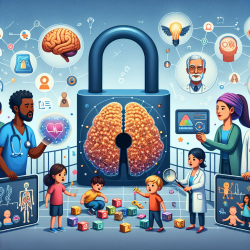Introduction: The Current State of Speech Therapy in Schools
As we navigate the complexities of delivering speech therapy in schools, a growing concern among educators and therapists is the feeling of burnout. This is not merely an anecdotal observation but a data-supported reality that requires immediate attention. The need for change is evident, and it's time to explore innovative solutions that can alleviate this burden and inspire a new way forward.
The Burden of Burnout: Analyzing the Data
Recent studies indicate that over 60% of speech-language pathologists (SLPs) working in school settings report experiencing burnout symptoms. These symptoms include emotional exhaustion, depersonalization, and a diminished sense of personal accomplishment. The data highlights a critical need for systemic change in how speech therapy services are delivered in educational environments.
Speech Therapy Telepractice: A Viable Solution
Enter speech therapy telepractice—a model that leverages technology to provide remote therapy services. This approach not only addresses the logistical challenges faced by school-based SLPs but also offers a flexible and efficient alternative to traditional in-person therapy. By reducing travel time and increasing accessibility, telepractice has the potential to significantly decrease the workload and stress levels of therapists.
Benefits of Telepractice in Schools
- Increased Accessibility: Telepractice allows for greater reach, enabling therapists to connect with students in remote or underserved areas.
- Flexibility: SLPs can manage their schedules more effectively, balancing work and personal life better.
- Cost-Effectiveness: Reducing the need for physical resources and travel can lead to significant cost savings for schools.
- Data-Driven Outcomes: Telepractice platforms often come equipped with tools for tracking progress and outcomes, providing valuable data for continuous improvement.
Challenges and Considerations
While the benefits are compelling, implementing telepractice is not without its challenges. Issues such as ensuring internet connectivity, training staff, and addressing privacy concerns must be considered. However, with strategic planning and support from government health regulators, these challenges can be effectively managed.
Conclusion: Inspiring Change Through Data-Driven Decisions
The data is clear—there is a pressing need to rethink how speech therapy services are delivered in schools. By embracing telepractice, we can not only address the current burnout crisis but also pave the way for a more sustainable and effective model of care. It is imperative that government health regulators recognize the potential of telepractice and support its integration into the educational system. Together, we can inspire change and create better outcomes for children, therapists, and schools alike.










